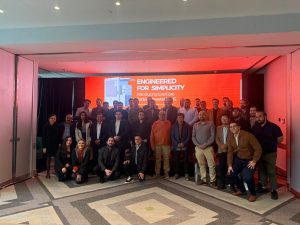Scott Hempling
Attorney at Law LLC
Effective Regulation of Public Utilities
Last month’s essay, Commissions are not Courts; Regulators are Not Judges, argued against regulatory reactivity. Courts exercise judicial power, addressing only the parties’ pleas; commissions exercise legislative power, making policy to serve the public. The difference is profound. A commission that addresses only the parties’ self-interests will fail to achieve the larger public interest.
Yet some regulators do see themselves as judges. They wait for disputes to resolve rather than look for problems to solve. Their choice is rooted in personal preference, because it has no statutory basis. And it cannot produce the best possible decisions. Thanks to discoveries from the fields of psychology and behavioral economics, we now know that passivity leads to error.
System 1 and System 2
Psychologist Daniel Kahneman describes two “modes of thinking,” known as System 1 and System 2.1 System 1 “operates automatically and quickly, with little or no effort and no sense of voluntary control.” It is “the source of the impulses that often become your choices and your actions.” System 1 is illustrated by the mental effort required to complete the phrase “2 times 2 equals ….” System 2, in contrast, “allocates attention to the effortful mental activities that demand it….” It is represented by the mental effort it takes to multiply 17 x 24.
Here’s the problem. Most of the time, System 1 operates “without your conscious awareness of its activities. . . .[I]t cannot be turned off.” And it is “radically insensitive to both the quality and the quantity of the information that gives rise to impressions and intuitions.” As a result, it is “the origin of many of the systematic errors in your intuitions”—errors that are “often difficult to prevent.” We can prevent these errors and biases only by the “enhanced monitoring and effortful activity of System 2.” If System 2 fails to detect the errors, we get biases.
What You See is All There Is
A common source of biased thinking is a mental tendency Kahneman calls WYSIATI—”What you see is all there is.” WYSIATI is a product of System 1. You treat the information in front of you “as if it were all there is to know.” From that incomplete information, you “build the best possible story, . . . and if it is a good story, you believe it.” In fact the less information you have, the easier you can “construct a coherent, believable story”—even if the information you have is not true or not complete. A mind influenced by WYSIATI “will achieve high confidence much too easily by ignoring what it does not know.”
That is where System 1 comes in. Because it operates on instinct, it does not supply the missing facts. “The amount and quality of the data on which the story is based are largely irrelevant” to System 1. And because the human mind also biases in favor of first impressions, we “suppress doubt and ambiguity.” System 1 thus “operates as a machine for jumping to conclusions”—unless we activate System 2.
Kahneman offers the example of a candidate recruited to lead a non-profit organization. When the search committee recommends her as “intelligent and strong,” the decision-maker develops a positive impression. But what if she was also “corrupt and cruel”? Hearing only the first two words, and influenced by WYSIATI, the decision-maker reached the wrong conclusion. Instead of asking “Do [the words ‘intelligent and strong’] conform to my impression of a good leader,” the decision-maker should have asked: “What characteristics make a good leader, and what facts do I need to gather before I form an opinion of this candidate?”
Merger Stories: Simple and Coherent vs. Complex and Complete
In the electric utility industry, merger applicants present a simple story: “This merger will (a) reduce overhead costs through ‘synergies,’ (b) enable the merged company to buy supplies at a discount, (c) improve access to capital (because Wall Street says bigger is better), (d) ensure the continuity of local leadership, (e) continue charitable contributions, and (f) use ‘best practices.’ Everyone else is merging, so we have to as well. There will be no harm, no job loss, and we’ll give every customer $100.” Repeated in nearly every application, this simple story has eased the approvals of nearly a hundred electricity mergers in just thirty years, cutting the number of independent utilities by over half.2
The story appeals to System 1. If you think “what you see is all there is,” the story takes hold because it is simple and coherent. But what you see is not all there is; the story merger applicants tell is incomplete. Consider eight common omissions:
- What the applicants call a “merger” is, at bottom, the sale and purchase of control: control of a government-granted, monopoly franchise.
- The sale produces a gain because the acquirer is paying a price above the target company’s market value. The acquirer is paying that price because it expects to use the monopoly franchise to increase its earnings.
- The target company’s shareholders will keep that entire gain for themselves, even though the major source of the gain—the target’s value as seen by the acquirer—is not the result of any actions by those shareholders. The value exists because the government protects the franchise-holder from competition and keeps customers captive.
- The target company selected the acquirer because it offered the highest acquisition price, not because it offered the best performance.
- The merging companies developed their estimate of “synergies” only after the target selected the acquirer. The companies are merging to get the gains; they estimated the synergies to support the story.
- The acquirer, its board and its CEO will have the legal power to dictate to the acquired utility every major facet of its business—investments, rate increases, capital structure, board membership, and executive leadership.
- The acquirer can make future acquisitions, of any type and of any, without limit and without getting the target regulator’s permission.
- In a cash buyout, the target’s shareholders depart. So they have no stake in the acquired utility’s future.
Merger applicants never mention these facts, because they complicate the story. And given the power of System 1 and WYSIATI, most people will never ask about them—unless they activate System 2. But if the regulator sees herself as merely a judge, she will not activate System 2. She will see only the story applicants choose to tell. Yes, the intervenors get a chance to fill out the facts. But their story’s complexity lacks the simpler story’s coherence. And it arrives only in rebuttal testimony, months after the applicants’ story has taken hold in the regulators’ minds. And if intervenors don’t offer an alternative story, but merely seek minor adjustments to the applicants’ story (like a higher customer payment or minor additions to the renewable capacity), the applicants’ story continues to fill the regulator’s mental space.
The solution? Make System 2 active at the outset. That means taking off robe off and putting on the thinking cap—the alert, active, questioning capacity of System 2. It means viewing a merger application not as a proposal to approve, but as a stimulus to ask essential questions: What kind of performance do customers deserve? What characteristics must the performer(s) have? How do we find the best performers? Judges do ask these questions; regulators must.
Every regulator has a choice: Address the questions parties ask—or decide what questions the public needs asked. Activate System 2 to counteract System 1. Lead rather than preside.




